Outclass. Outsmart. Outshine. The Survivor-esque tagline chosen by Mitsubishi Motors Malaysia for its latest offering reminds me of the pioneering reality show that brought out the best (and worse) of its competitors. Just like how it was on Survivor Island, it’s a dog-eat-dog world in the local C-segment SUV playground.
The game has well-established players, and they don’t take too kindly to newbies. The Honda CR-V is a mainstay, a seasoned competitor that knows the island inside out. The Nissan X-Trail – after sitting out a couple of seasons – is back, bigger and stronger. And what about the brash young Mazda CX-5. What it lacks in experience, the fan favourite compensates with youthful appeal and agility.
It’s an unforgiving competition that has took its toll on the Koreans, who started brightly but have wilted as the weather took a turn for the worse. It’s survival of the fittest, and if Mitsubishi wants to be a the modern-day SUV/4×4 specialist that it’s positioning itself as, it’s here that the legendary Dakar brand must cut its teeth. MMC must master this new game.
The Outlander appears well-equipped for battle. First, it’s physically imposing. At 4,695 mm long, the Mitsu is 55 mm longer than the X-Trail and 105 mm longer than the CR-V, although its 1,810 mm width is marginally (10 mm) less than both rivals.
The Outlander’s 2,670 mm wheelbase sits in the middle of the Honda’s 2,620 mm and the Nissan’s 2,705 mm. But as the CR-V’s generous interior volume proves, wheelbase length is only a guide and clever packaging matters as well.
Mitsubishi claims best-in-class cargo volume of 1,608 litres after the 60:40 second row and 50:50 third row seats are folded. The fully-flat bed can then swallow up to four golf bags, a single mattress or plenty of flat-packs from Ikea. The T32 X-Trail, the other SUV with seven seats, holds up to 1,520 litres with all seats down. Like the Nissan, there’s a recess under the boot floor to stow away the tonneau cover.
The Outlander is available here in a single variant, powered by a 2.4 litre four-cylinder MIVEC engine to tackle the bigger-engined CR-V (2.4L, 190 PS and 222 Nm), X-Trail (2.5L, 171 PS and 233 Nm) and Mazda CX-5 (2.5L, 184 hp and 250 Nm).
Mitsubishi’s naturally-aspirated DOHC unit makes 167 PS at 6,000 rpm and 222 Nm of torque at 4,100 rpm, and is paired to an INVECS-III CVT automatic gearbox with steering paddle shifters.
MMC’s Multi-Select 4WD system has three modes – 4WD Eco (FWD as default, channels drive to rear axle when needed), 4WD Auto (auto splits torque to both axles, rear will always have some drive) and 4WD Lock for tough conditions. In the 4WD Eco mode where 99% of buyers won’t wander out of, Mitsubishi Motors Malaysia’s in-house testing averaged 12.8 km/l.
If the name sounds familiar, that’s because the Outlander isn’t a new spinoff. Remember the Mitsubishi Airtrek and “Evo SUV” Airtrek Turbo that USF-Hicom imported in the early noughties?
That was the JDM car. The Outlander name was used for most export markets, and replaced the Airtrek moniker altogether when the larger second-generation SUV appeared in 2005. The third-gen Outlander surfaced in 2012, and the car we have here is a heavily facelifted model unveiled at last year’s New York show.
The term facelift is understating the Outlander’s dramatic change in appearance – this is an all-new face with MMC’s latest “Dynamic Shield” styling as seen on the firm’s recent showcars like the XR-PHEV and eX Concept, as well as the latest Pajero Sport. The new look is characterised by a chrome element that visually links the headlamps to the foglamps, while defining the “mouth” of the car. A wider and more encompassing version of the Lexus spindle grille, if you like.
It’s a bold front that looks modern, robotic even, further embellished by the heavy use of chrome on the front, sides and rear. A thrusting look that’s worlds apart from the meek face with rounded features of the pre-facelift seen above, which wouldn’t have stood much chance in a style-conscious market like ours.
The rear end hasn’t seen as much change, but the tail lamps have been disconnected and now feature cool triple LED bars. Looks a little like the outgoing Pajero Sport from a distance, but there’s a unique chrome “pedestrian bridge” to help with identification. Generous use of black plastic cladding on the lower perimeter of the car gives the Mitsu a rugged image.
Three colours – white, grey and this nice shade of red – are available. As you can see, red looks good on the Outlander, and that’s not something all SUVs can pull off (that’s you, X-Trail). The high-spec car you see here is as per official press images, with the same dual-tone 18-inch alloys.
For this writer, the likes of Mitsubishi and Subaru change design themes too often, and it is hoped that Dynamic Shield gets a longer lifespan, as it’s a fitting look for SUVs. There are strong signature cues, but it’s not a one-face-fits-all look either, as demonstrated by the Pajero Sport and North American Outlander Sport (ASX) facelift.
The facelift might have worked a charm, but there’s no running away from the conservative, upright shape of the 2012 original. It’s a stark contrast from the urban look of the CR-V and the gentle curves of the X-Trail; if you prefer your SUVs looking rugged, the Outlander and upcoming CKD Subaru Forester facelift (we’re in a different era now, but the name Subaru still keeps popping up!) serve up a more traditional 4×4 look. There’s something for everyone, and this fresh face is much welcomed.
Unfortunately, the makeover did not extend into the cabin, which lags behind rivals in design. Actually, there’s not much design to speak of – the Outlander’s dashboard could not possibly have a more simple design than this in 2016 (not to be confused with deliberately minimalist interiors).
Conventional to the point of being unimaginative, the dash is at least very simple to use and functional, with no ergonomic or clarity issues. You don’t even have to search for the parking brake – the good ol’ handbrake lever is in the same location as it was in your first car.
Signs of trying include gloss black trim on the centre stack and steering wheel – accented by metallic strips – and dark wood trim on the dashboard and front doors, which are not unpleasant. The main dash moulding and front door caps are in relatively soft plastic, but they aren’t the most premium feeling in pliancy and texture. The stitched instrument binnacle hood is a nice touch, though.
With this utilitarian cabin, Mitsubishi has lost an opportunity to delight spoilt-for-choice SUV buyers, but perhaps hands were tied in what ultimately is just a facelift. MMC, like Subaru (again!), has always relegated interior design to the afterthought department (case in point, Lancer GT vs Civic FD cabins), and more focus should be put in this area, IMHO. They’ve done a good mod job of the Triton’s dashboard for the new Pajero Sport, though – the next clean sheet design should be better.
An extra row of seats means that the Outlander will appeal to families, and driven like how a family car with kids and seniors should be driven, the Mitsu is a pleasant companion. Low speed refinement is good, and it’s so silent and vibration-free during idle that I initially thought that this SUV had auto start-stop.
Compared to the X-Trail 2.5 4WD, which also uses a CVT, I remember the Nissan to be faster off the line, but the Outlander’s engine is better mannered and less vocal at low revs. Throw in low rolling noise and daily commuting in the Mitsubishi is more serene than in the X-Trail 2.5. Those trading up from the ASX will also notice the lower NVH levels.
The current crop of CVTs used by the likes of Toyota and Nissan make it a point to replicate the feel and more natural response of a regular torque converter automatic, and they do it pretty well. Here, there’s no mistaking the gearbox for anything but a continuously variable automatic, with less correlation between engine speed and actual speed than some CVTs in the market.
It’s a CVT trait one will have to adapt to if coming from a regular automatic, and with time, your driving pattern will change to bring out the best of the drivetrain. Whether this is not an issue, tolerable or a deal-breaker, depends on the individual and his/her driving style.
The heavy-footed among us will note that off-the-line and on-demand response isn’t the sharpest; “kickdowns” are met with a vocal whine that can lead to an impression of the engine struggling. The 2,360 cc MIVEC isn’t weak, but the manner in which it picks up speed (when given a bootful of gas) might invoke mechanical sympathy for the soft-hearted.
There’s manual mode with Mitsubishi’s signature long shift paddles if you want to take full control, but the simulated ratios don’t feel the most connected either. Best to just adapt and drive progressively, like one should when driving the family around. It’s not the most natural athlete, the Outlander, but there’s decent steering weight and feel although the helm feels rather slow.
A run to JB and back also revealed occasional less than perfect high speed stability, but this was only in the third half of the speedometer that’s rarely visited. More pertinent is the minute steering inputs required to keep the car on the desired trajectory, which makes long distance cruising that bit less effortless than it could be. Nothing dangerous though, and probably a non-issue for many.
The Outlander has a comfortable high speed ride even from the second row, and the Mitsu’s steady lope was endorsed by colleague Izwaashura Sadali, who is prone to car sickness when not in the driver’s seat.
Our half pint-sized BM writer also commented that third row seating is slightly tighter here than in the X-Trail, but both are not full seven-seaters in any case. Best left for emergency use or for young children, but good to have nonetheless. Speaking of seats, the driver’s chair is on the firm side for a family SUV, and both of us prefer the X-Trail’s “Zero-Gravity” seats.
Plus points include second row seats that can slide and recline, although there are no air con vents for the second and third rows. The standard Konica Minolta (yes, the company that used to make cameras) window film offered by MMM compensates somewhat.
The lack of rear AC vents is just a small dent in the Outlander’s showroom appeal, which is very strong. Here’s a CBU import from Japan priced at RM166,720 on-the-road without insurance (introductory price for units booked and registered before May 31), which is between the RM159,164 X-Trail 2.5 and the RM167,620 CR-V 2.4L, both locally assembled.
That alone would be an achievement if the Mitsubishi’s equipment list matched that of the CKD SUVs, but no, the Outlander comes packed with kit, some of it unique in the segment.
How about LED headlamps and LED daytime running lights, 18-inch wheels, sunroof, electric tailgate, keyless entry with push start, dual-zone auto air con, cruise control, auto headlamps/wipers, 2DIN factory touchscreen head unit, reverse camera, leather seats and heated front seats all as standard. The latter is useless here, but it’s part of an equipment pack and can’t be deleted for a small volume market like ours.
There’s more. The new player is equipped with a class leading seven airbags (front, side, curtain, driver’s knee), Active Stability Control (ASC) and Hill Start Assist to go along with the basic ABS, EBD and Brake Assist. Two Isofix child seat mounts are available in the middle row.
MMM offers a factory warranty of five years or 100,000 km. The company claims that estimated maintenance costs over 100,000 km for the Outlander is lower than that of the X-Trail 2.5 – RM5,239 vs RM6,727. Good to know, but spread it over a couple of years and the cost difference won’t make or break a case.
The local distributor has yet to disclose post-introductory pricing, but as things stand, the Outlander is a fantastic deal for a highly-specced, Japanese-made SUV. A 2.0 litre variant boasting the same value would strike at the heartland of the C-SUV market and worry the incumbents, as the bulk of sales are from this sub-segment. Alas, such a car would cannibalise ASX sales, and MMC’s junior SUV is here to stay.
Unbeatable price/kit combo aside, the Mitsubishi Outlander is a fresh face in an urban landscape saturated with the usual suspects, comes with two bonus seats, and has good urban refinement. It’s not perfect – we would be surprised if a facelifted model jumps straight to the top – but on this account, the new player looks to have enough to remain on the island in an attempt to Outwit, Outplay and Outlast.
Looking to sell your car? Sell it with Carro.

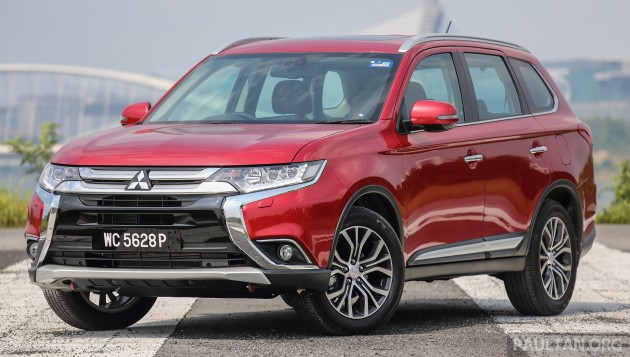






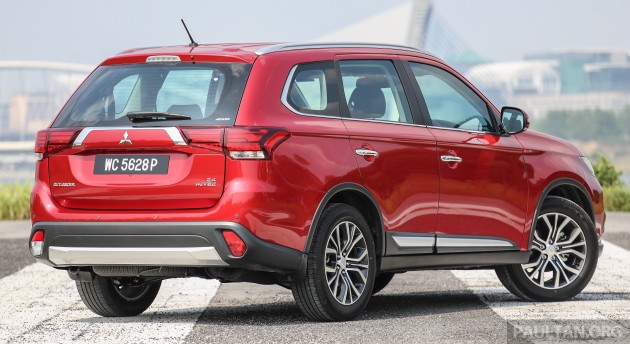
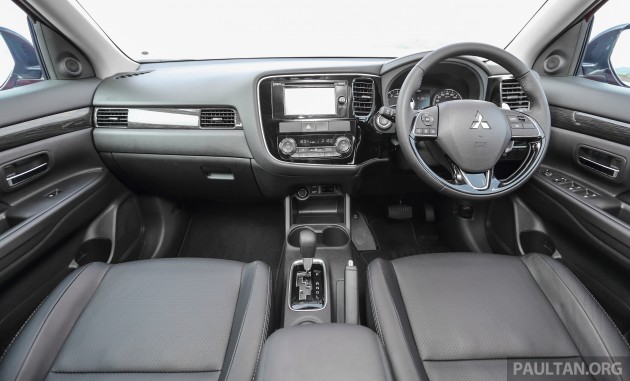











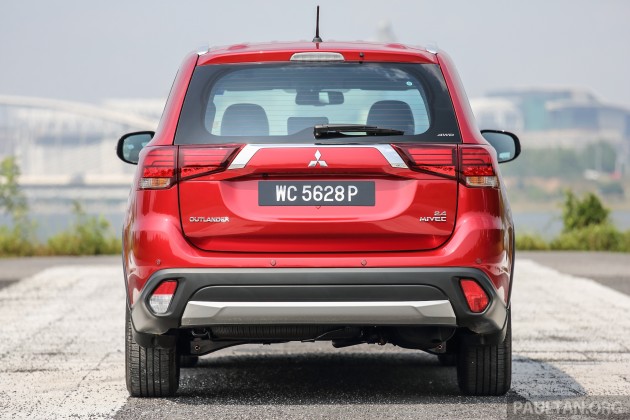

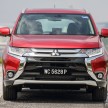
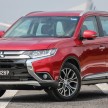
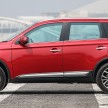
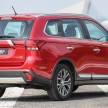
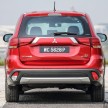
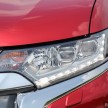
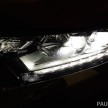
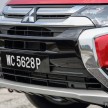
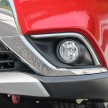
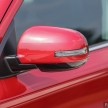
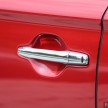
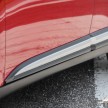

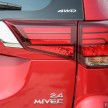

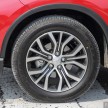
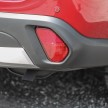
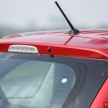
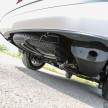
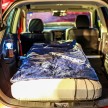
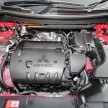
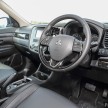
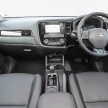
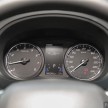
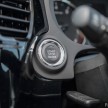
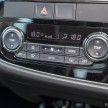
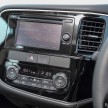
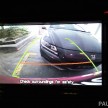
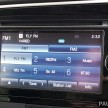
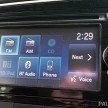
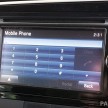

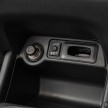
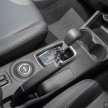
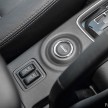
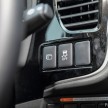
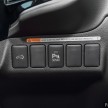
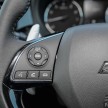
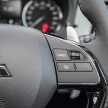
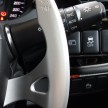
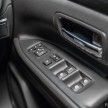
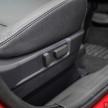
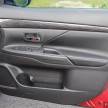
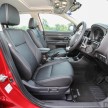
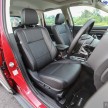
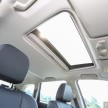
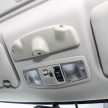
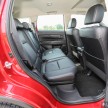
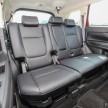
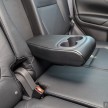
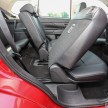
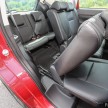
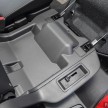
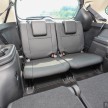
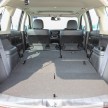
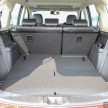
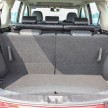
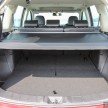
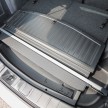
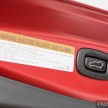



Am I the only one? It’s actually looks dated! In and out, old!
Looks odd from the side.. The wheelbase is kinda short, and it stretches quite abit after that to the bumpers… But generally looks good n fresh.. U canot mistake it for any other brand…
If im looking for an suv, i wdnt get this, the brand is just dying, and id love to know how old is the engine and da cvt combo are… Is it the 4b1 which was intrduced around 2006??
Proton Exora look and drive better.
yeah, it looks like a stretched and corner-rounded old pajero…
Now if only Mitsubishi Malaysia keeps this price then it’ll continue to be a winner. It’s cheaper than the Pajero Sport too
Much better than recond F30 316
at least he worked hard to buy a bmw….how about u? drive myvi or no car yet?
You believe he has bimmer? Lol
Yup
If i got money, i will buy recond 318 at this price just like you
Later vomit blood to repair
Ah mitsubishi mitsubishi , what do we do with you ?
What the heck, electronic parking brake also don’t have. The much cheaper Honda HRV also has. At least give a foot operated parking brake for a 7 seater family car, it frees up space in the center console.. Like that also cannot do ??? Even the old Mitsu Grandis MPV is using it. Very poor interior packaging. Want snatch sales from the CX-5, very hard la…
Kudos to the top notch safety aspect though.
Fun fact: it was originally meant to be an emergency brake, so a foot-operated one or even an electronic one wouldn’t make sense.
Going down Genting will be like driving a Camry.
Good review. Next time please gather all c-segment suv in the market (Crv, Cx5, Xtrail, SantaFe) and make comparison between them.
and remember to include the forester as well
New 2016 Kia Sorento offers more refined and quality interior at about the same price. Good to have both a side-by-side review.
Any Idea when Kia Sorento 2016 launch? Menggigil tunggu ni…design mantap…harga nno idea….i am waiting…
Hi buddy, last we heard, it’s coming in May: http://paultan.org/2016/03/28/third-gen-kia-sorento-coming-to-malaysia-in-may-2016/
Oh ok….I tunggu lah kot2 harga lebih kurang…x nak menyesal. Sabar2….tungggguuuu
Any Idea How much the price?
Very low spec. No FCM & super select 4WD-II, plus under power engine. Why other country come with 3.0-L V6 Mivec Engine.
3.0L is much more expensive as it is in a difference price bracket for excise duty tax rates. Plus you think 3.0L roadtax and fuel consumption, Malaysians can accept it ???
Reality wise, people here wouldn’t , if not, you won’t see 2.0L NA D segment cars in our country. In Australia, D segments NA starts from 2.4L onwards
If you’re going to aim for a 7 seater, best to wait for the CX-9
There’s a mistake with the price rm166.xx
needs to spend another 4-5k? For proper window tint to block out d heat since its lacking rear blowers,
looks good, well kitted out, cbu from japan, for most ppl, it might seal d deal for them…
put in 4b11T.. remove vsc abs 2airbag steel rim..and sell it at rm150k..sure top sales
No rear airconds? Hmmmmm…
If do compare with new fortuner this mitsu way much better all rounder.Price,design,spec,fuel consumption,comfort & much dated than T.. Luckily it come at almost near than new fortuner,so about time to brainwash my lovely daddy to trade in his fuel drinker old fortuner to new mitsu.Furthermore riding that T for almost 5years had been hell to my comfort travel nap as Toyota it known as bumpy shock absorbed kinda materials.New fortuner look weird too,ugly front & back design,awkward small tyre & body proportions & definately as thirsty as the predecessor.Sorry Same L0rr,but what your consistency on RV not as true as claimed.Even T dealers pricing so f* low for trade in this fortuner.My dream to ditch T out of my life finally come true.Not hate but sick of falsely claimed.
the fact that it still uses the old workhorse sohc-engine from the outdated Grandis, this outlander should be priced circa rm120k or below. even the tranny is from the old tech invecs-3 cvt makes u feel more like riding on a scooter.
you are smart bro. there is 9 mitsubishi salesman thumbs down you
This not the old Grandis engine. That one was a 4G69, using timing belt. This new outlander is using 4J12 timing chain driven engine, a newer SOHC version than the DOHC 4B12 engine used in Lancer Sportsback in Malaysia.
Very nice! But must save money for business.I’m not a crony & don’t get soft loan.
Is it just me that thinks the front and rear are not well blended? It seems not proportional.
Contractors new toy.
My kayu balak friend also like this….not for me…org tua punya taste..
Unfortunately MITSUBISHI is outdated in Malaysia. This model has nothing refreshing. So boring and outdated.
I agreed….i like Mitsubishi for performance but design adohhh…so sad…geram betul ngan designer team…buat lah futuristic sikit.
claimed as modern day SUV specialist…….cant wait for the soon to be all new Korean 2.4
Sleek but interior looks ordinary.. Heard Koreans will launch theirs soon. Worth waiting as price & tech will be the challenges.
Any idea how much the price?
Emmm…harga not bad…tapi design org tua..oppsss..nak tunggu kia keluar dulu lah…
looks great for site visiting………but coming soon Korean made……. for the engineers and above
Tapi I like Mitsubishi Attrage very much….my brother car test it last Xmas…from Miri to Sibu…minyak RM50…jimat…but sayang my area KL x banyak service center…susah nak servis. :-(
Well…i have seen the car last week at Puspakom Wangsa Maju..no bad at all..anyway few friend told me that the brand new Kia Sorento just around the corner…and i been told it worth of money to purchase compare than Mitsubishi Outlander.we shall see and test drive both model.
Malaysian vehicle prices must drop by 50% otherwise we are overpaying by 50%………….worth it?
At last, sonemoe who comes to the heart of it all
I have seen these Outlander. I would Prefer X-trail 2.0. A bit Cheap..All View Camera is the Most Important.. For the Big Car..
They should bring in hybrid version. http://www.mitsubishi-cars.co.uk/outlander/explore-phev.aspx